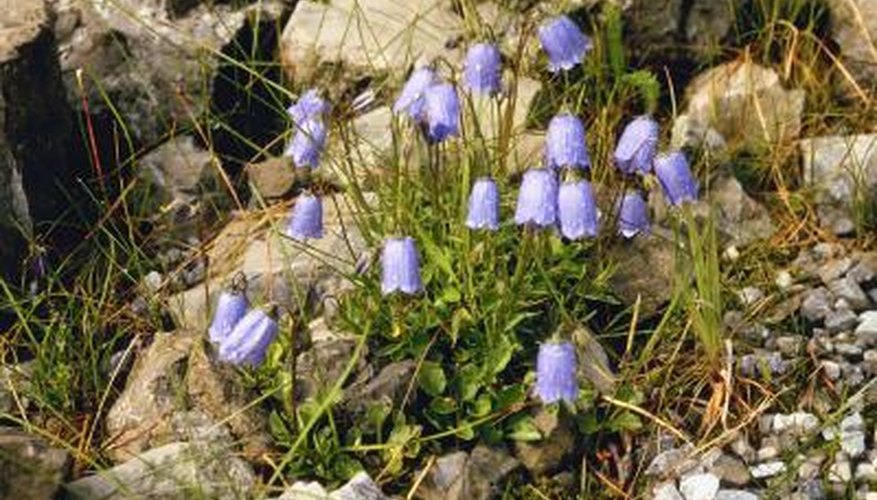Spanish bluebell (Hyacinthoides hispanica) is a spring-blooming perennial native to Spain. The bulbous roots go dormant in the winter. Long, delicate, strap-shaped leaves appear early in spring, followed by delicate, blue or lavender hanging bell-shaped flowers in late spring and early summer.
Growth pattern and care
The Spanish bluebell does not have a central stalk. The leaves and flower stem grow directly from the bulb. Once two to six leaves emerge from the bulb, a flower stalk 30 to 45 cm (1 to 1 1/2 feet) tall emerges from the centre of the leaves. Spanish bluebells do not need pruning in the traditional meaning of the word, but the foliage and flowers do need to be cut back and tended during the growing season to encourage strong growth and to keep the garden looking neat and tidy.
- The Spanish bluebell does not have a central stalk.
- Spanish bluebells do not need pruning in the traditional meaning of the word, but the foliage and flowers do need to be cut back and tended during the growing season to encourage strong growth and to keep the garden looking neat and tidy.
Removing the flower heads
Remove the flower heads throughout the spring and early summer as the Spanish bluebell flowers begin to fade. Use a pair of scissors or sharp pruning shears to clip the flower stalks at the soil line. Remove the flower head to prevent seeds from forming and dispersing. Spanish bluebells can be invasive in some areas when allowed to go to seed. Removing the flower stalk keeps the plants looking tidy though the spring and encourages stronger bulb development and more flowering in the following years.
- Remove the flower heads throughout the spring and early summer as the Spanish bluebell flowers begin to fade.
- Removing the flower stalk keeps the plants looking tidy though the spring and encourages stronger bulb development and more flowering in the following years.
Tending the foliage
Allow the foliage to remain after the flowers fade in late spring. Keeping the foliage into early summer encourages the bulbs to develop. If the leaves are beginning to flop all over the garden, take a handful and twist them into a loose knot. The bulbs gain nutrients through sunlight absorbed by the leaves, and the garden area looks neat and tended. Tie one large plant or two smaller closely spaced Spanish bluebell plants together.
- Allow the foliage to remain after the flowers fade in late spring.
- The bulbs gain nutrients through sunlight absorbed by the leaves, and the garden area looks neat and tended.
Cutting back the foliage
Cut back the Spanish bluebell foliage in middle to late summer. Use a pair of sharp shears and cut the leaves back 1.2 cm (1/2 inch) above the soil line. Mulch the area with straw, wood chips or compost to insulate the bulbs during the winter. Use a 15 cm (6 inch) layer of straw or a 10 cm (4 inch) layer of wood chips or other heavy material. Spanish bluebells are hardy even in the coldest parts of the British Isles.
- Cut back the Spanish bluebell foliage in middle to late summer.
- Use a pair of sharp shears and cut the leaves back 1.2 cm (1/2 inch) above the soil line.
